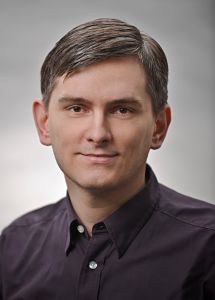Continuum Computing platform for self-adaptive machine learning based IoT applications
Abstract:
This tutorial presents a comparative study of five technologies used to develop and deploy self-adaptive Machine Learning (ML) based IoT applications on continuum computing platforms (edge-to-cloud solutions). The five technologies are AWS IoT Greengrass, Azure IoT Edge, Google, Balena and Nuvla/NuvlaEdge.
The comparative study focuses on three aspects:
- The services supported by the five solutions to develop and deploy self-adaptive IoT applications on edge-to-cloud technologies;
- The performance of the five technologies from an application and developer point of view;
- The operating costs incurred by the deployment of a given self-adaptive ML based application on a given edge-to-cloud solution.
The last part of the tutorial is dedicated to the presentations of two examples of large-scale deployments of self-adaptive ML based IoT applications on an edge-to-cloud platform. The focus will be on the used edge devices and how the edge intelligence is adapted and improved according to the context.
Brief schedule
- Why Continuum Computing? (60 minutes)
- A comparative study of Continuum Computing solutions (60 minutes)
- Two examples of IoT applications deployed on an open-source Continuum Computing solution (60 minutes) – Hands-on.
Intended audience
PhD Students, engineers, scientists, industrials, and researchers interested in edge-to-cloud IoT applications/platforms, deployment, and development of IoT applications. Prerequisite knowledge or skills required for attendees 1. Cloud basic knowledge 2. Python
Instructor:
 Nabil Abdennadher, University of Applied Science and Arts, West, Switzerland
Nabil Abdennadher, University of Applied Science and Arts, West, Switzerland
Nabil Abdennadher received the Diploma in Engineering (Computer science) from ENSI, Tunisia, and the Ph.D. degrees in Computer Science from University of Valenciennes (France) in 1988 and 1991, respectively. He was an assistant professor at the University of Tunis II from 1992 to 1998 and a research assistant at EPFL from 1999 to 2000.
In 2001, he joined the Depart. of Computer Engineering at the University of Applied Sciences, Western Switzerland (HES-SO, HEPIA) as an assistant HES professor. In 2008, he became an associate HES professor and in 2017 he was promoted to full HES professor.
He is currently head of both the inIT Research Institute and the LSDS research group. His major research interests include high performance and distributed computing, Internet of Things and urban computing. He is representative of the Swiss Alliance for Data-Intensive Services in Swiss Romande, and member of the Editorial Board of the Journal of Reliable Intelligent Environments.
Nabil Abdennadher participates in several research projects funded by Europe, Innosuisse, swissuniversities, Switch AAI, SEFRI and HES-SO.
Breaking Boundaries: Discovering New Horizons in Association-Oriented Data Model
Abstract:
This tutorial aims at presenting possible new ways to perceive data modelling. A few well-established approaches are influencing both programming and data storage areas. All of them focus on data containers defined in various ways. However, the aspect of joining these structures is rarely profoundly analyzed. We will explore the limitations of that approach and compare it with a data model that prioritizes associations.
The study focuses on:
- Primitives of data modelling, i.e., data containers and the links between them,
- Data access and manipulation,
- Data impedance mismatch, its costs and imposed limitations,
- New data models as an alternative to old ways’ domination.
After the presentation of ideas, we will cover two examples of applications that require more sophisticated solutions than relational or object-oriented approaches can offer. We will explore Semantic Knowledge Base that comprises semantic networks, ontological core, multi-language linguistic module and more. The second example will be the Unified Process Metamodel useful in modelling continuous processes.
Brief Schedule (3 x 50-60 minutes):
- Rethinking Data Modeling: Breaking Free from 70s Ideals.
- Unveiling the Association Data Model (AOM).
- Realizing the Potential: Two Illustrative AOM Implementations.
Intended audience:
This tutorial caters to an intellectually curious audience, including PhD students, engineers, scientists, industrials, and researchers keen on expanding their knowledge of data modelling. Attendees should possess a basic understanding of data structures and UML.
Instructor: Krystian Wojtkiewicz, Wrocław University of Science and Technology, Wrocław, Poland
Krystian Wojtkiewicz, Wrocław University of Science and Technology, Wrocław, Poland
Krystian Wojtkiewicz is an esteemed educator from Wrocław University of Science and Technology in Wrocław, Poland. With a profound computer science, engineering, and management background, Krystian obtained his Diplomas and a PhD from renowned Polish universities. Drawing upon over 20 years of expertise in IT systems modelling, he is a true specialist in business process modelling and optimization. Krystian’s scholarly contributions include over 30 research papers, and several book editions, with his insightful work recognized through his involvement as a reviewer in top-class conferences and journals.


